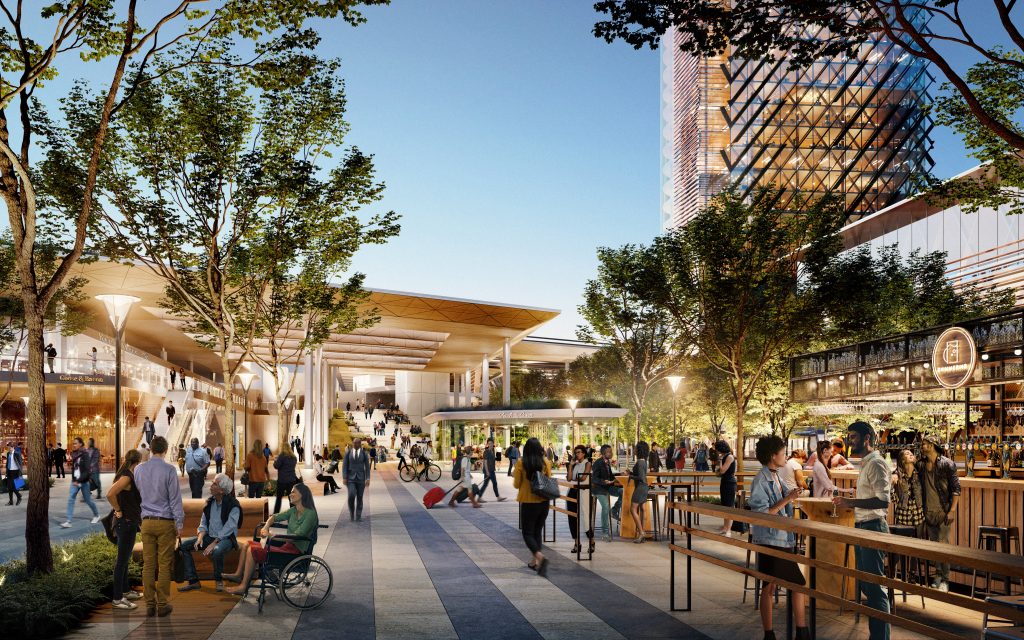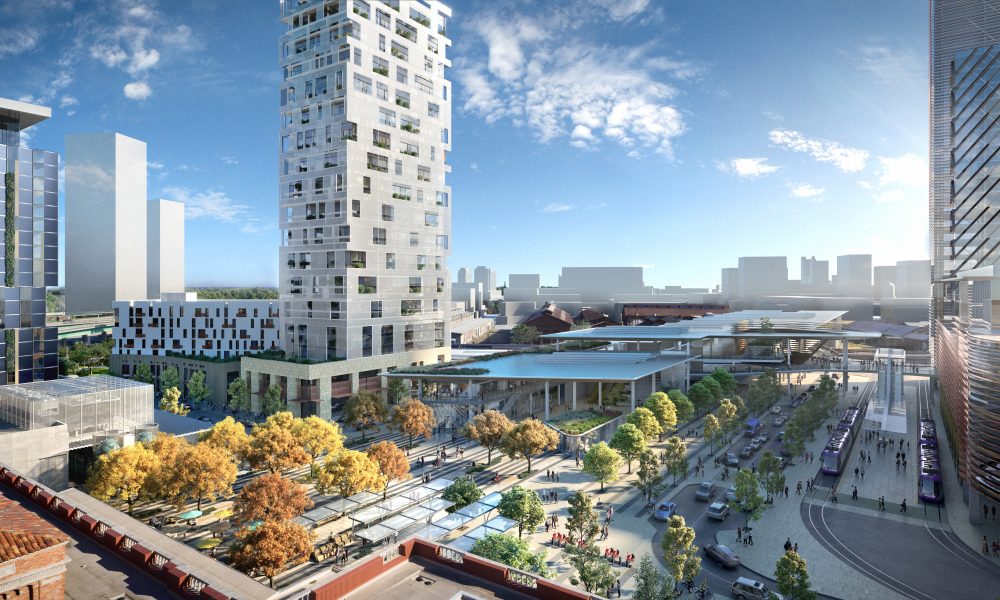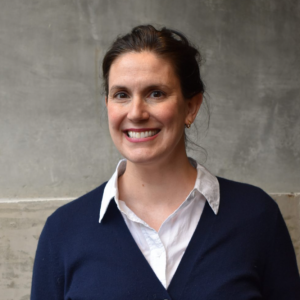As we enter fall 2021 amidst news of devastating global fires, Earth’s hottest month on record, and a bleak United Nations Intergovernmental Panel on Climate Change (IPCC) report, we once again find ourselves asking – how can we act bigger, faster, sooner to address climate change?
One might begin to find answers – along with hopefulness and inspiration – in a municipal effort like that of the Sacramento Valley Station Area Plan, a project whose scale, ambition, and impact are much-needed in this world. The City of Sacramento has set a bold example of government not stopping at the adoption of resolutions and policies that set ambitious environmental and equity goals, but proceeding to act on those resolutions at scale as they envision, finance, and execute the Sacramento Valley Station Area Plan – a model of regenerative urban infill development.
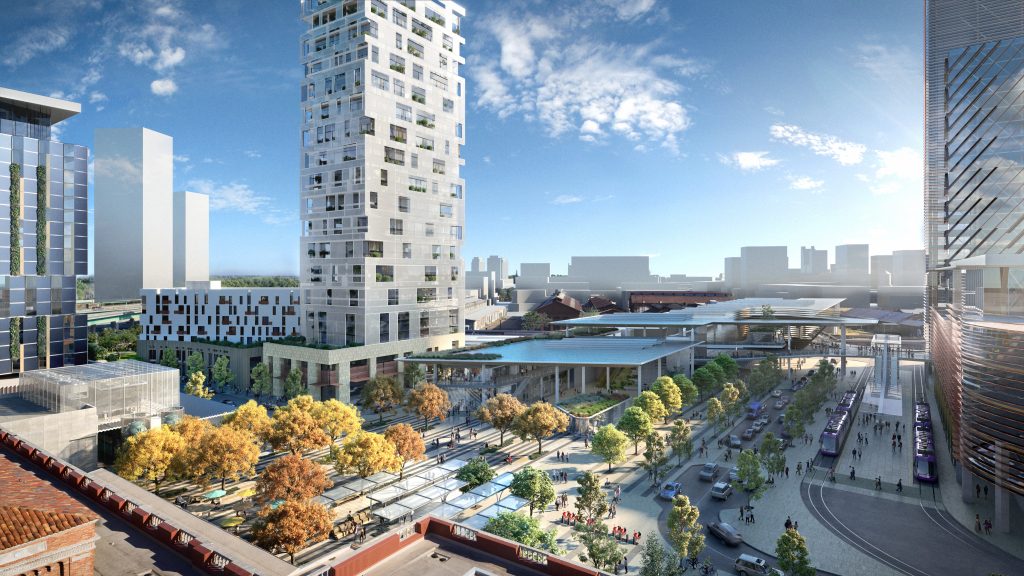
The Sacramento Valley Station Area Plan (SVS Area Plan) is a regional transportation hub on 23 acres of city-owned land in downtown Sacramento, California. The site is at the intersection of rail and bus routes that serve populations far and wide and is currently home to a historic rail station (the Sacramento Valley Station, which gives the project its name) and to the seventh busiest Amtrak station in the United States. The City of Sacramento and their design teams at Perkins&Will and Arup have developed a plan to revitalize and restore the existing brownfield site into an exemplary multi-modal transportation hub wherein the city-controlled modes of transportation themselves are taking on carbon reduction goals, as well as a thriving residential and commercial destination that provides links to the historic downtown and surrounding areas.
The Sacramento Valley Station Area Plan is seeking Living Certification under the International Living Future Institute’s (ILFI’s) Living Community Challenge (LCC), and recently achieved Vision Plan Compliance, the first milestone in the LCC certification process. The Living Community Challenge seeks to extend the ideals established by the Living Building Challenge from the individual building outward to the community at large. Because of the large scale and extended timeline inherent to community-scale projects, the Living Community Challenge has four certification milestones to help guide the project to successful certification and to celebrate its successes along the way. The four LCC milestones are (in sequential order) Vision Plan Compliance, Master Plan Compliance, Emerging Community Status, and finally Certification at the Zero Energy, Petal, or Living level. If achieved, LCC Living Certification would mean in essence that the community functions as an ecosystem informed by its bioregion’s characteristics, generates all its own energy with renewable resources, and captures, reuses, and treats all its water.
ILFI’s Kate Wise Knecht had a chance to discuss the project with the City of Sacramento’s Sacramento Valley Station (SVS) project manager, Greg Taylor, and the SVS team’s design lead at Perkins&Will, Geeti Silwal, to dig into the ambitions, challenges, and opportunities of a municipal project at this scale, and how those fit within the framework of ILFI’s Living Community Challenge (LCC).
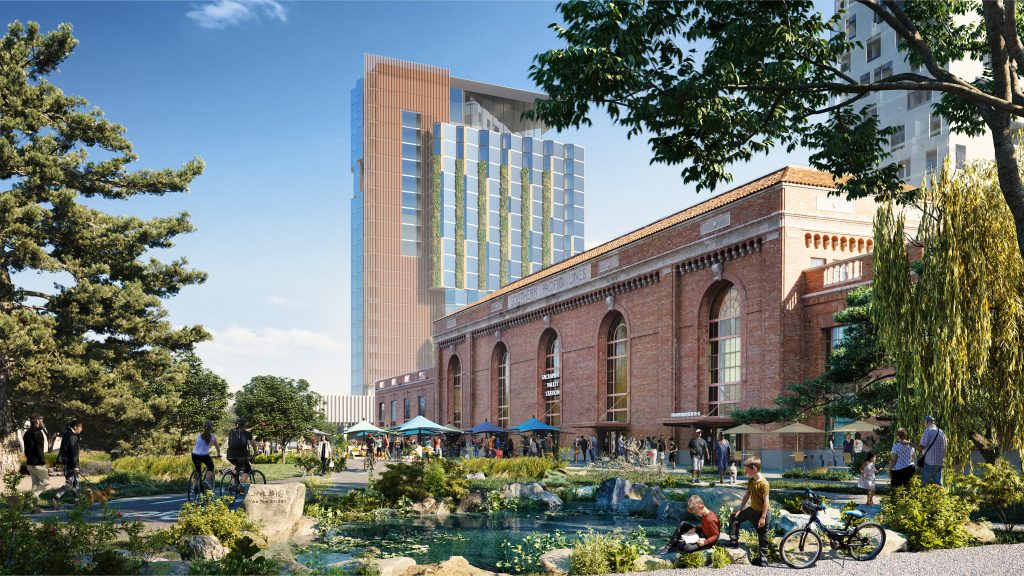
As a bit of background, the policy stage was set for the Sacramento Valley Station LCC project by the City of Sacramento’s Climate Action Plan (CAP), which established a plan for addressing climate change within the city boundaries. The CAP was incorporated into Sacramento’s City 2035 General Plan in 2015. That plan included goals around carbon neutrality, celebration and enhancement of natural systems, prioritization of the health and well-being of the community, climate change and adaptability, and public awareness about sustainability and resilience. According to SVS Project Manager, Greg Taylor, the goals outlined in the City of Sacramento’s CAP and 2035 General Plan established “a strong policy framework for the SVS Area Plan to pursue a Living Community Challenge project as a demonstration of City priorities.” The City’s climate directives were accelerated with the Mayors’ Commission on Climate Change, which wrapped in 2020, providing recommended strategies to achieve carbon neutrality by 2045. The project is a major milestone demonstrating the City leadership needed to achieve carbon neutrality.
While the SVS Area Plan is centered in policy addressing climate change, the project’s goals are not limited to environmental considerations. The project also prioritizes the needs of both the immediate and surrounding communities as well as those of the transit passengers that are passing through. According to Taylor and Silwal, the project is conceived around user experience, with anticipated user groups spanning a large variety of roles – from a recreational visitor to a day-time office worker, from an on-site resident to a transient rail or bike commuter. The site’s many public spaces are designed to be flexible, adaptable, and actively used throughout the day, to serve the multiple purposes of the different user types, and to accommodate a variety of events and activities including a farmers’ market, riverfront access, and community-tended gardens.
Community and user experience is also prioritized through the circulation strategy of the site. Pedestrian and bike trails linking to and within the SVS Area Plan will connect users to various districts surrounding the site, providing connection to the surrounding community for those working, recreating, or commuting on site. A non-vehicular Transit Plaza is at the heart of the SVS Area Plan, while vehicular and rail circulation occur at the perimeter of the site, providing needed vehicular and rail transit access while prioritizing and encouraging human-powered mobility.
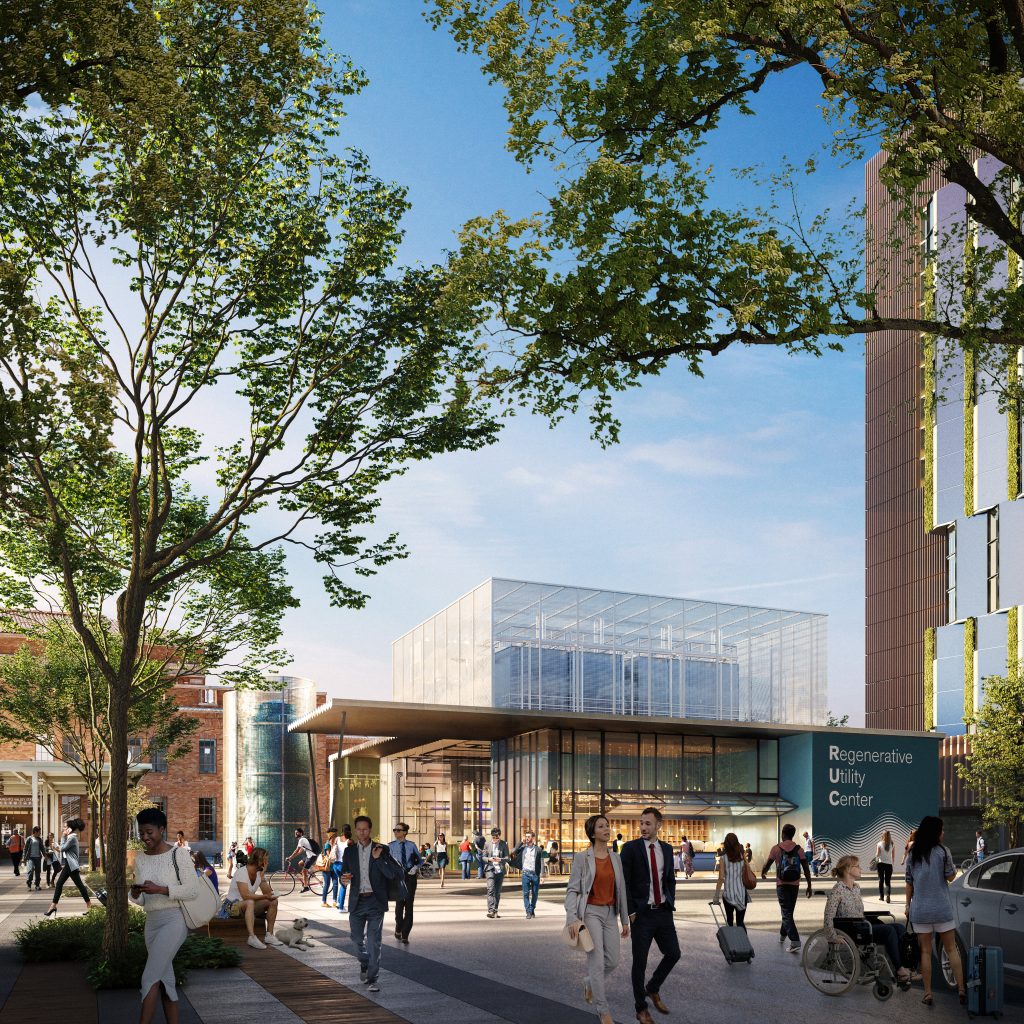
The SVS Area Plan was conceived by the City in three phases with the first two phases (new station tracks, platforms and tunnels, and the renovation of the historic station) having already been completed. Phase 3 comprises the scope of the LCC plan and will have a series of three sub-phases (further explained below), each with Living Community Challenge goals. The SVS Area Plan project is scheduled for completion by 2040.
With the lengthy project timeline associated with such a large-scale project, the City of Sacramento and the SVS project team plan to prioritize and track the Living Community Challenge goals through a sequential implementation of the plan in three sub-phases, with LCC goals being tracked in each phase. The first sub-phase will be construction of the Bus Mobility Center, which will pursue Living Certification under the Living Building Challenge (LBC),and has a target completion date of late 2026. The next subphase is construction of the Regenerative Utility Center (RUC), also pursuing LBC Living Certification, which will house the district water treatment and ground-source energy infrastructure, and is scheduled to be constructed by 2030. The last sub-phase is the Concourse which is slated to be completed between 2035 and 2040 and would be the final building pursuing LBC Living Certification. Upon completion of all three sub-phases, the project would also be able to submit for LCC Living Certification.
When asked what advice he would give to other teams working on municipal district scale projects, Taylor noted that, “Local governments can lead in implementing community derived policies through smart investments in sustainable and restorative community infrastructure, placemaking, mobility options, and the many other aspects of creating complete communities for all. Particularly when the governmental entity controls the property, that agency has a particular responsibility to ensure it creates the most long-term value for the community it serves, and a district-scale project allows the community to have a broader, inclusive impact with demonstrable results. Do not be limited by current policies, but use the LCC imperatives to critique current values and advance the public dialogue around these criteria.” As days pass and news cycles continue and the earth continues to warm, we, at ILFI, could not agree more.
